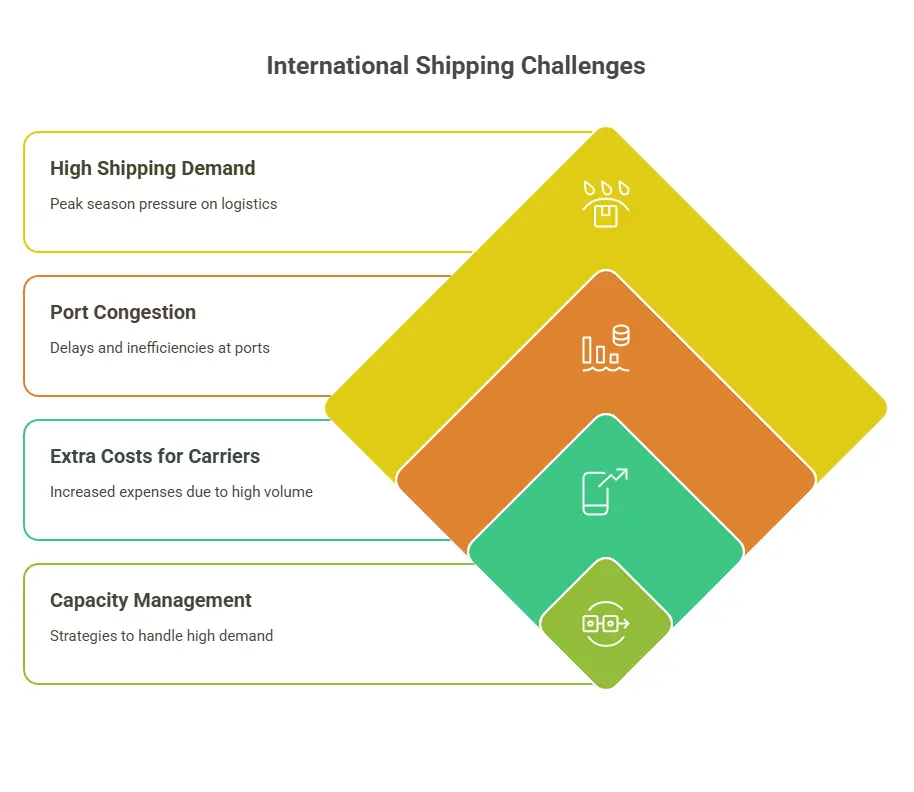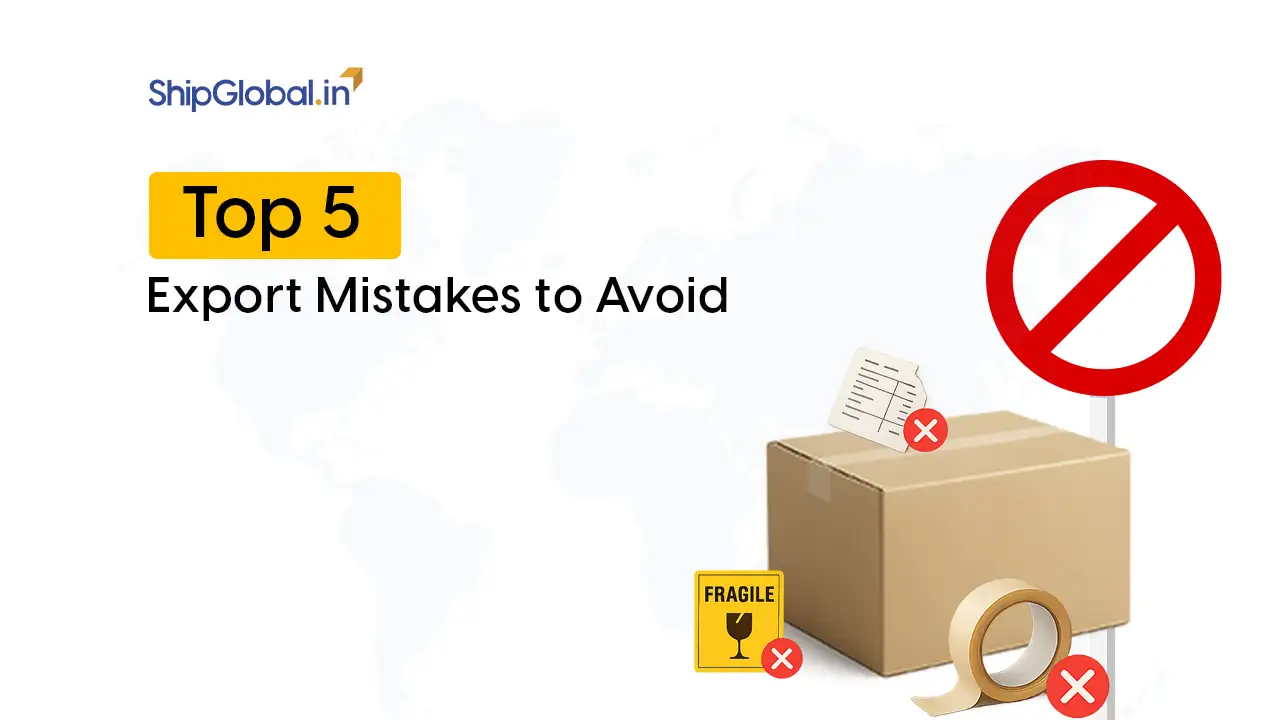If you’ve ever been surprised by a sudden spike in shipping costs, especially just before the holidays or during major retail seasons, you’ve likely encountered something called a Peak Season Surcharge, or PSS.
For businesses involved in international trade, this charge can feel like it comes out of nowhere. But once you understand what it is, why it exists, and how it impacts your supply chain, you’ll be better equipped to manage it and even plan around it.
So, let’s talk about what PSS is and why it matters to global shipping.
What is Peak Season Surcharge (PSS)
At its core, a Peak Season Surcharge is an extra fee that shipping carriers apply during times of high demand. It’s not a hidden cost, though it often catches people off guard. It’s essentially a surcharge added on top of the regular freight rate, and it usually shows up during specific times of the year when shipping volumes increase dramatically.
These peak periods typically align with major global shopping seasons, back-to-school inventory shipments, and holidays. During these times, space on ships, planes, and trucks becomes limited. Carriers respond by increasing prices to manage demand and cover their rising operational costs.
In short, it’s the shipping industry’s version of surge pricing.
Why Does PSS Exist
The short answer? Because supply and demand fluctuate, carriers need to balance both.
But let’s break it down further.
1. There’s a Lot More to Move
During the international shipping peak period, manufacturers, retailers, and e-commerce brands all rush to get their products out the door. Ports get crowded, vessels fill up quickly, and warehouse space becomes scarce. This creates pressure on the entire system.
2. Ports Get Backed Up
When a port is processing far more containers than usual, delays happen. Ships have to wait to unload, containers pile up, and everything slows down. Carriers may charge a shipping congestion surcharge to offset these delays and inefficiencies.
3. Extra Costs for Carriers
More cargo means more work, more trucks, more drivers, more dock workers, and more fuel. To keep everything moving, carriers have to increase their spending. The carrier-imposed surcharge helps them cover these additional expenses.
4. It’s About Managing Capacity
During peak seasons, demand can far exceed the available capacity. Carriers use PSS to manage this by prioritizing high-value shipments and discouraging last-minute bookings that might clog the system.

Which Shipping Methods Are Affected by PSS
PSS isn’t limited to one kind of shipping; it can impact all modes of transport, depending on the market conditions and trade lanes involved.
Ocean Freight
This is the most common area where peak season freight rates and surcharges appear. Shipping lines often adjust their prices during peak months to account for container shortages, vessel overbookings, and long port wait times.
Air Cargo
When time is tight, many businesses switch to air freight, but air space is even more limited. Airlines often add a seasonal air cargo surcharge to handle the higher demand for urgent or sensitive goods during peak times.
Road and Rail
Cross-border surcharge trends show that even land transport can see price increases during busy periods, especially when trucking capacity is stretched or when customs processing is delayed due to volume.
How PSS Impacts Your Supply Chain
Understanding the PSS impact on supply chain operations is key for businesses of all sizes. The effects aren’t just about paying more, they reach across planning, inventory, and customer satisfaction.
1. Unexpected Costs
If you’re not prepared for a freight surcharge, it can seriously disrupt your logistics budget. What starts as a small additional fee can quickly scale up across multiple shipments.
2. Slower Deliveries
During peak seasons, even with higher costs, transit times can stretch out due to port congestion and delays. This can lead to late arrivals, missed promotions, or stockouts during key sales windows.
3. Supply Chain Uncertainty
The unpredictability of seasonal logistics costs makes it harder to plan accurately. If you’re working on tight delivery timelines or managing inventory for seasonal sales, PSS can throw off your entire schedule.
When Does PSS Usually Apply
PSS typically shows up in the lead-up to major holidays and retail events. This includes global shopping holidays, end-of-year celebrations, and other high-demand periods. The exact timing can vary based on region, industry, and global trade conditions.
However, it’s safe to say that if you’re moving goods during a time when “everyone else” is too, you should expect some sort of holiday season shipping increase.
How to Prepare for and Manage PSS
Now that you know what Peak Season Surcharge is and how it can affect your operations, let’s look at a few ways to handle it wisely.
1. Plan Ahead
The earlier you start planning for your peak season shipments, the better. Booking space early often helps you avoid the worst of the congestion and gives you more control over rates.
2. Communicate with Your Partners
Stay in close contact with your freight forwarders, carriers, and suppliers. Ask about expected surcharges and plan collaboratively to reduce risk.
3. Lock in Rates Where Possible
Some carriers offer contracts or fixed pricing for loyal customers. This can be a good way to protect yourself from sudden spikes in global trade surcharges.
4. Build Flexibility into Your Pricing
If your shipping costs might increase due to PSS, make sure you account for that in your product pricing or delivery models. Transparency with customers helps, too; they understand that holiday shipping is never easy.
5. Diversify Your Logistics Strategy
Consider spreading your shipments across multiple carriers or ports. This reduces reliance on a single route or provider, which can help avoid bottlenecks.
Final Thoughts: PSS is Inevitable, But Not Unmanageable
Here’s the truth: Peak Season Surcharge isn’t a scam, and it’s not going away. It’s a reflection of how global logistics works under pressure.
But just because it’s inevitable doesn’t mean it has to be painful. The more you understand about high-demand shipping fees, seasonal logistics costs, and how the system reacts to peak pressure, the better equipped you’ll be to handle it calmly and strategically.
Whether you’re shipping by sea, air, or land, anticipating carrier-imposed surcharges and preparing your operations accordingly can save you time, money, and stress.
FAQs for Peak Season Surcharge
PSS is typically applied during the peak shipping season, which often runs from late summer through early winter. This includes periods leading up to major holidays, back-to-school season, and global sales events.
Shipping costs rise due to limited space, higher fuel usage, port congestion, labor shortages, and a surge in global shipping volume. Carriers add surcharges to compensate for these added challenges.
Yes, PSS can apply to ocean freight, air cargo, and even road or rail shipments, depending on the carrier and market conditions. It’s most commonly seen in international shipping.
No. A general rate increase (GRI) is a permanent or semi-permanent rise in freight rates, while PSS is a temporary surcharge that applies only during peak periods.
PSS is usually listed as a separate line item on your shipping quote or invoice. If you’re unsure, ask your freight forwarder or carrier to explain the breakdown of charges.








